What Is Application Lifecycle Management? ALM Explained

Many different kinds of software are available today, so, speed is important for the life-cycle management of an application. The majority of the most well-known software companies distribute updates for their software on a daily basis.
All these companies need to have the best management possible, otherwise, their productivity will decrease. So they need to develop long term plans to maintain their software.
Companies can accomplish that consistency by using Application Lifecycle Management (ALM). ALM assists companies in making better choices for their software, thus enabling them to effectively sustain the software.
Application Lifecycle Management (ALM) is similar to Product Lifecycle Management (PLM), with the difference being that application lifecycle management is used in applications. ALM incorporates all the key components of an application’s lifecycle, ranging from acquiring the starting requirements to the application’s maintenance. The life-cycle ends when the application stops being used.
This article created by our team at TMS will examine some of these aspects of application lifecycle management, as well as the advantages of using ALM, and the necessary tools.
What Exactly Is ALM?
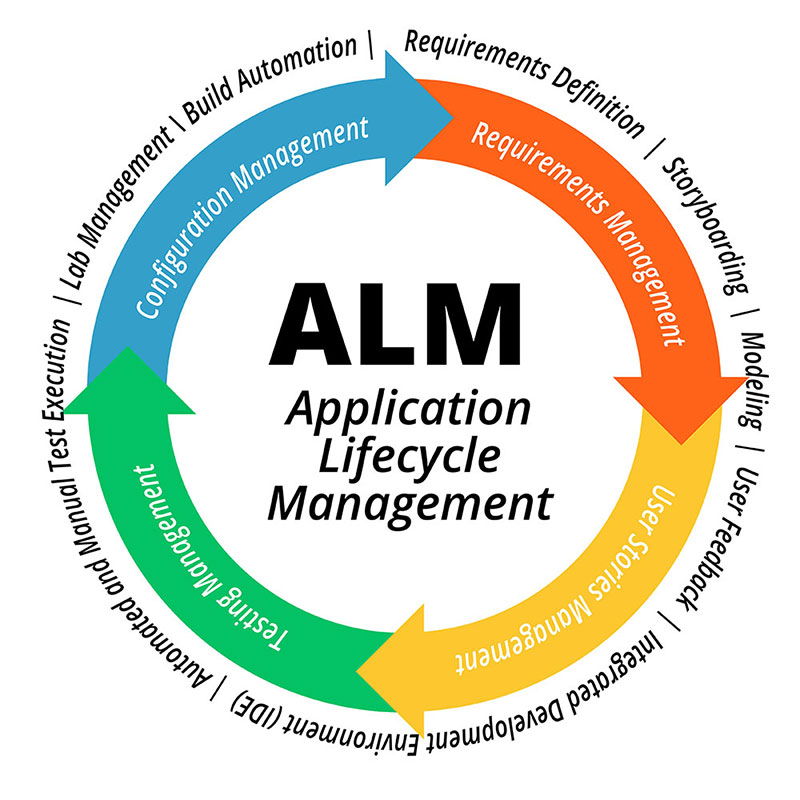
Simply put, ALM is the process of creating and maintaining an application until it’s no longer used. So, anything from the initial idea to the customer support is part of the application lifecycle management. So, ALM involves every member of your team, along with any tools they use. Any actions taken by the team to manage the application are also part of ALM.
In theory, application lifecycle management enables improved communication during the lifetime of the application, which allows every department to collaborate with the development teams easily and efficiently.
By using active lifecycle management, you can implement both agile and DevOps development approaches, because your different departments can cooperate more efficiently.
Some people confuse application lifecycle management (ALM) with the software development life cycle (SDLC). While they may appear similar, the essential difference is that ALM consists of every stage of an application’s lifetime. SDLC includes only the development side of an application, so SDLC is just one part of ALM.
What Does Application Lifecycle Management Consist Of?
Application lifecycle management covers many different departments, including:
- Project Management
- Application Development
- Requirements Management
- Testing and QA
- Customer Support
Application lifecycle management can be divided into different phases, or it can be a constant procedure, depending on your development process (e.g. waterfall, agile, or DevOps).
No matter which process you decide upon, ALM is divided into four distinct parts:
Administration, Development, Operations, and Maintenance.
Application Administration (Defining Requirements and Designing)
The Application Administration is an essential phase of the ALM. It is also known as the “requirements definition and design” phase. If you decide to use DevOps, this is the stage where you plan and create.
Generally, you collect any requirements for the application in this stage, ranging from the client’s requirements to the compliance requirements from governing bodies. Gathering the requirements is a unique process, usually where the general requirements are met first, followed by more precise ones.
The requirements follow a tree structure, in which the bottom part (the trunk of the tree) hosts the general requirements. As you can imagine, each branch and each twig is a different, more specific requirement.
If you choose any other development methodologies, like the Agile Method, the process is different. You do not use a hierarchical structure to rank the requirements. Instead, you should find the general requirements and distinguish them from the more precise ones.
Knowing that the tasks of the administration team include:
- Pinpointing the main stakeholders
- Ensuring a single point of accountability for the project
- Deciding who the owner of the project is
- Finding the executive departments
- Formatting their ideas
- Generating a business case for the application or the project
- Setting up requirements and customer demands to help the development team
- Managing the project and select the preferred development approaches
- Handling the benefits
- Discontinuing the application when needed
Application Development
The second stage of the application lifecycle management is development, also known as the software development life cycle, or SDLC.
The stage of the application development consists of the following:
- Planning
- Designing
- Creating
- Testing
- Publishing
- Maintaining
The development of the application begins after you’ve decided and set the requirements, and at this stage, your application is brought to life.
The development team needs to deconstruct the requirements into smaller ones. This is how the team will create a development plan that they’ll follow throughout the whole development process. It’s recommended to place representatives on each of the teams during this process, ensuring that the application goes through development smoothly. These steps might differ depending on the development approach you choose. The tasks of the development team include:
- Designing the application, based on the needs of the users
- Finding the software architecture
- Coding the application
- Managing changes
- Conducting version control
- Managing configurations
- Testing and QA
- Managing different builds
- Managing the official release and sustaining the final application
Application Operations

This stage is concerned with maintaining the final application. In DevOps, this stage includes the release, the configuration and the monitoring of the application. This phase investigates potential bugs and their fixes. By fixing these, you organize how the release updates for your application will be managed.
Application Operations cover all processes involved with the maintenance of the application, including monitoring or performance measurement. The application Operations start once the application has been published. They’ll end only when the application comes to the end of its lifecycle.
The tasks of the applications operations team include:
- Customer Support
- Reporting
- Performance Monitoring
- Security Monitoring
We can help you turn your idea into reality, take over your existing project, or extend your current development team.
Schedule a free consultation at hello@tms-outsource.com, or fill out the form and we will follow up with you shortly.
Consistent Maintenance And Improvement Of The Application
As a general rule, the longest part of the application lifecycle management is its maintenance. Neither the development teams nor the users are generally involved during this stage.
During this whole process, the application is supported by a support team, who will solve any problems that occur. Any maintenance and improvement is done after the application is deployed, so the performance of the application can be systematically reviewed.
Any bugs that remain will be discovered and fixed during this stage. If the development team has done a great job, their help is not required.
A key part of this process is deciding when the application and project should be retired. Then, they’ll be able to work on newer versions of the application, or the product could be changed to something completely different.
Why Is ALM So Important
If you want to deploy quality releases in good time, you must implement ALM.
-
It allows you to place the correct requirements.
You can ensure that these goals are met, as well as assisting the development team, as it allows them to improve. Remember to always test the application as the process continues.
The best way to implement ALM is by using ALM tools, and there are many excellent tools on the market. You should have no problem using them throughout the whole lifecycle of the application.
Combining ALM tools along with a great development team will make your product stand out.
-
You can use ALM with any development approach.
ALM is the foundation. Its features depend on your chosen approach, so, you can use both old-school methods like Waterfall or modern ones like Agile.
Regardless of your chosen approach, ALM is fundamentally about creating, integrating, and maintaining a product.
-
ALM adopts a holistic approach.
Every process of ALM can be run individually, but they rely on each other, in order to get the best possible product. This approach isn’t only true for ALM applications.
You might have integrated some non ALM applications along with your ALM, for improved functioning of your business. Businesses need to understand that using ALM is really efficient. Every team on the project is able to communicate with each other, in order to collaborate and create an amazing application.
ALM combines all the different departments of the project, so your application can be developed, deployed, and maintained much more effectively.
The Benefits Of Application Lifecycle Management
ALM has multiple advantages, although not all of them will apply to your business at every stage. Some of the most significant benefits ALM offers are:
-
Improvement on Employee Satisfaction, Productivity, and Usage
It assists the development team. This is especially clear on the SDLC. Using ALM, the development team can decide which tools they prefer.
This is extremely important, as employees tend to work better with the technology of their choice, thus ALM is crucial to improving productivity and employee satisfaction.
-
Allows for Real-Time Decision-Making
Businesses can make better choices for their application as it continues to age. Real-Time planning and version control are features giving teams an edge over competitors.
With these features, the teams can “predict” the application’s future, so they can make plans beforehand, thus improving the application.
-
Collaborating with Multiple Teams
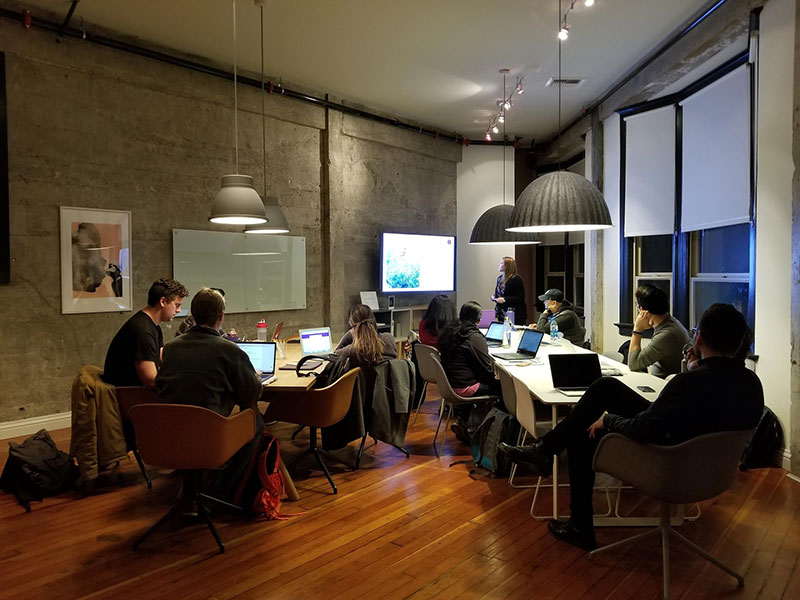
Many organizations have bases all over the world, making ALM necessary because they need to have a means of effective communication without network disturbances.
ALM tools make sure that anyone involved in the development phase has access to the status of the project, so, ideally, everyone knows about every plan/strategy or changes.
-
Boosts Development Speed and Agility
The market today is highly competitive, with every business trying to find something that will make them stand out. Software development is no different.
Your teams will be able to create products using ALM, with tremendous speed and agility, allowing you to continue being competitive.
-
Enables Tests and Solutions
Using ALM tools provides access to a platform that’s useful throughout the development and testing of your application.
Developing software has many challenges, including providing ways for the teams to communicate with each other. For example, if the testing team finds bugs, the development team needs to be immediately informed, so they can start developing a solution as soon as possible.
-
Assists businesses in Planning More Effectively
ALM allows you to initiate any project with the right methodologies and calculations. It supports the administration of the project by using resource planning.
You’ll have different tools at your disposal, depending on the requirements of your application. Another factor is the development approach you choose, which means access to certain tools with a Waterfall project, or different tools if you have an Agile project.
-
Acquiring and Sustaining Highly Satisfied Customers
Regardless of the type of company you have, keeping your customers satisfied is vital. So obtaining customer feedback is important in order to improve your product. This is exactly where ALM excels. They have an integrated system to collect any feedback and pass it down to the teams, thus enhancing the communication.
Agile VS Waterfall Approaches
Agile software development is rapidly increasing in popularity. This new way of development has changed the way that teams manage the application lifecycle.
The Agile methodology has taken the place of the more traditional methodology, and updated all the ALM stages of an application, from planning to maintenance.
What Is The Waterfall Methodology?
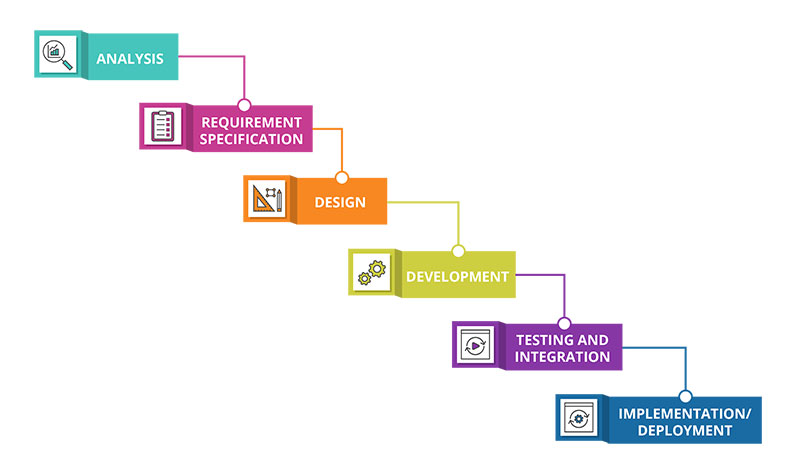
The Waterfall methodology is more traditional and is also known as the Linear Sequential Life Cycle Model.
The Waterfall Model follows a sequential order. This means that the team will continue to the next stage of a project when the current step is finished. Every stage is done only once. The results from each stage are used as data for the next one.
A Waterfall project starts by identifying the requirements, then proceeds to the development phase. This is followed by the deployment of the application and the maintenance of it.
What Is The Agile Methodology?
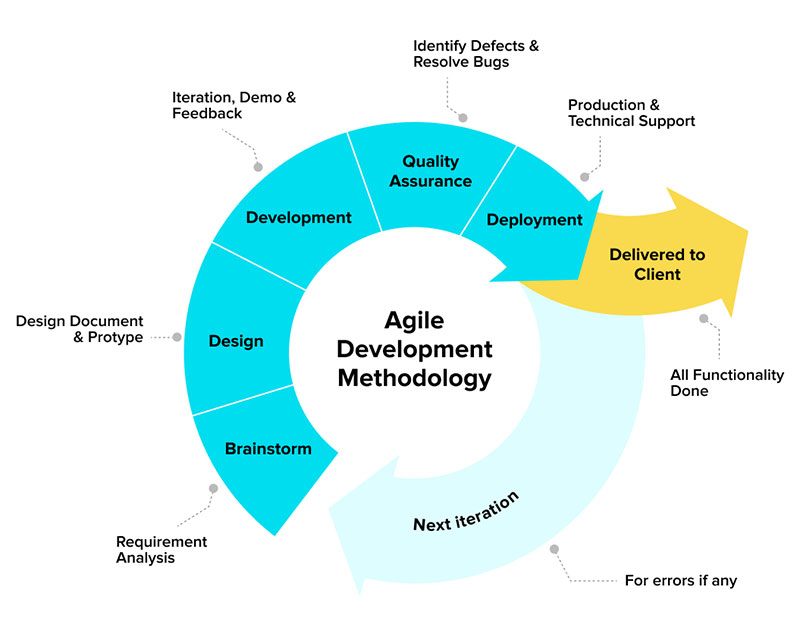
The Agile Methodology is significantly different from Waterfall. Any development and testing is done simultaneously. This is really helpful because it enables improved communication between the teams, customers, and managers.
This approach encourages teams to continually check their work, so, anything from designing to testing is done multiple times during the development phase.
Application Lifecycle Management (ALM) Tools
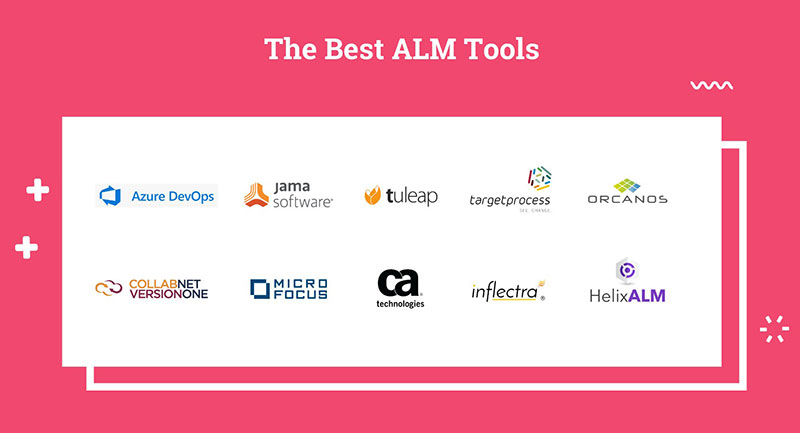
ALM uses certain tools to achieve better results, usually utilized to automate the development and deployment of the product.
Some main features of ALM tools are the following:
- Requirements management
- Estimation and planning
- Source code management
- Testing and quality assurance
- Deployment or DevOps
- Covers over one application lifecycle management phase
- Allows users to see the traceability between the different phases
- Shows entities’ history (i.e., who changed what and when)
- Maintenance and support
- Version control
- Application portfolio management
- Real-time planning and team communication
Every ALM tool also works as a project management tool, allowing for great communication between the teams.
You might need to utilize some extra tools to obtain the best results.
Your chosen ALM tool needs to assist your development process, whether it be Waterfall, DevOps, or Agile.
Some of the most well-known ALM tools are the following:
- Atlassian Jira
- IBM ALM solutions
- Rally (formerly known as CA Agile Central)
- CollabNet VersionOne
- ALM Octane
- Rommana ALM
- Jama Software
- SpiraTeam
- Perforce Helix ALM
- Microsoft Azure DevOps Server
- Tuleap
- TeamForge by CollabNet
- Basecamp
Looking for a development partner?
If you’re looking for a technology partner, development team augmentation, or just a company for your software&app development initiatives, consider TMS.
TMS is a software and digital company in Belgrade, Serbia. We develop innovative and modern software.
A few examples include premium booking software Trafft, MedTech apps like MR Prepare, or MarTech/AdTech apps like the Advise Media Suite, among other great software examples.
Check out our services and also some of the work we’ve done for our clients. Who knows, maybe we’ll form a successful relationship.
Schedule a free consultation at hello@tms-outsource.com, or fill out the form and we will follow up with you shortly.
If you enjoyed reading this article on what is application lifecycle management, you should check out this one about software development budget.
We also wrote about a few related subjects like hire a web development team, ALM tools, how to hire a web developer, how to write an RFP and web development companies in Serbia.

